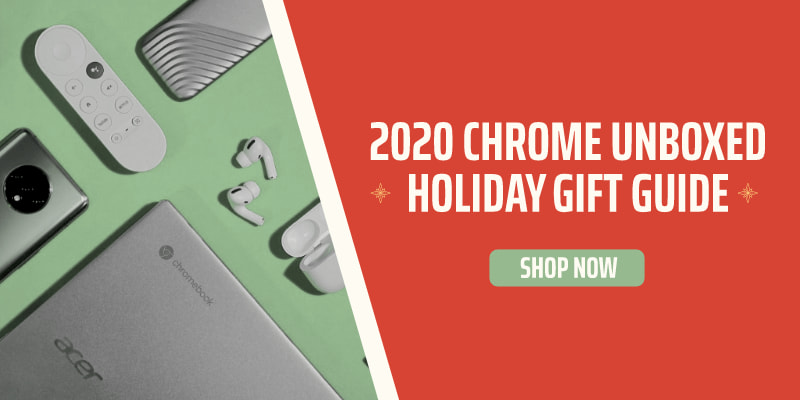
As we’ve all mostly moved into the modern era of computing, general users are quite familiar with the trackpad. Clearly perfected first by Apple on its own Macbook line, the trackpad has gone from frustrating concession on Windows laptops to a genuinely useful tool that many – including myself – prefer to use over any other input method to move the cursor around the screen. Don’t get me wrong: I like a good mouse as well. If push comes to shove, however, and I had to choose only one way to get my cursor across my screen each and every day, I’d choose a good trackpad.
Make note, however, of my use of the word ‘good’ in that last sentence. By good, I mean solidly-performing, smooth, clicky, and responsive. There are still mediocre trackpads out there on plenty of devices and those trackpads are not what I’m speaking of. If I’m voting for the trackpad above all others, I’m going with something like the one we find on Macbooks, Apple’s Magic Trackpad 2, the Pixelbook Go, HP’s x360 14c, or Logitech’s older T650 to name a few.
Who really needs a trackpad?
I suppose we should clarify why it is we’re even talking about this in the first place. There are a couple reasons, actually, so let’s hit on both. First, when I’m at the desk and have the room to spread out a bit, I like my pointer device on the side of the Chromebook. I’m not sure what it is about that setup, but I’d rather have my mouse or trackpad off to the right for longer work sessions and from the looks of most desktop setups, I don’t think I’m alone in that. Sure, the trackpad on the device itself is nice to use most times, but those trackpads are often limited in size and, let’s be honest, the ergonomics are just better with a pointing device on the side at the same level as your keyboard.
Second, there are tons – TONS – of users who dock their Chromebook or use a Chromebox on a daily basis. While I choose to type on my Chromebook and keep that screen on along with my larger monitor, that isn’t the case for many. Instead, they plug in the Chromebook at the desk and use an external keyboard and mouse all day long. Chromebox users are clearly in this camp as well (Chromeboxes obviously don’t have a built-in mouse or trackpad) and as more and more people work, learn, and play from these devices, more external input methods become even increasingly important.
So, if we take the fact that lots of users enjoy trackpads as a primary input experience (again, Apple has sold a wireless trackpad for Mac OS for years at this point) and those same users find themselves in a workflow that requires they use external accessories at the desk, it only stands to reason that a well-made, functional, enjoyable wireless trackpad for Chromebooks would emerge. Right?
Well, up to this point, no. Not right. While we’ve seen official support for devices like the Logitech T650 (which was fantastic) and Apple’s Magic Trackpad line, the harsh truth is we still don’t have a fully-integrated wireless trackpad solution. Brydge tried but couldn’t get things lined up with Google’s demands and the entire project was abandoned before the C-Touch ever hit the market. You can’t buy a new Logitech T650 any longer, and while the Magic Trackpad 2 works well with Chromebooks, there is something a bit off about using it that causes mine to miss swipes from time to time and randomly lose connection. There’s just no solid option for users who need a good, external wireless trackpad right now.

Why Logitech could build a fantastic trackpad for Chromebooks
Remember those fantastic, wireless accessories we covered earlier this year from Logitech? The K580 and M355 were made with Chrome OS in mind and it shows through and through. Both the keyboard and diminutive mouse have the ability to connect via Logitech’s proven USB receiver or via Bluetooth and both work exceptionally well. I’ve been using both of these accessories since we reviewed them and can say without doubt that they are both absolutely rock-solid at maintaining connections with any Chromebook I use them with. I love the reliability of the Bluetooth connection and the convenience of the USB receiver dongle when I need to quickly connect to a device, too.
Whatever it is Logitech has done to create this experience could easily be ported into whatever they choose, and that’s why I’m hopeful they would choose to build us a trackpad. Not a Windows trackpad or a Mac OS trackpad that Chromebook users can try out, but a Chrome OS-specific trackpad. Logitech has everything it takes to build a great trackpad device (the T650 was just awesome) and they have all the kinks figured out for Chromebooks and their oft-wonky Bluetooth. Where other devices sometimes fail with keeping all-day connections, Logitech’s K580 and M355 never waver.
So, if anyone from Logitech is reading this, I’m asking you to build us a proper Chrome OS trackpad. It doesn’t need the haptic wizardry of the Apple Magic Trackpad 2 (though that would be freaking awesome if it did), just a solid click, smooth surface, and amazing connectivity. You already did the hardware work in building the T650 and you’ve already done the software magic in the K580 and M355. If those things were combined, a truly special Chromebook accessory could be born that I’m sure many, many users would find very helpful. Logitech, we all know you possess the ability to do this. In the event you weren’t sure it was wanted, I’m here to tell you it is and that I and many others are legitimately hoping you consider making it.


Leave a Reply
You must be logged in to post a comment.